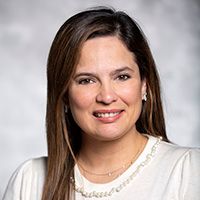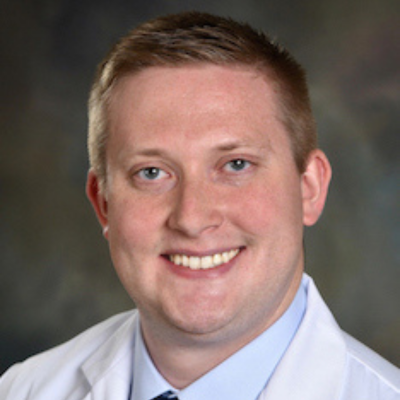- Center on Health Equity & Access
- Clinical
- Health Care Cost
- Health Care Delivery
- Insurance
- Policy
- Technology
- Value-Based Care
In Cancer Care, Innovation Comes at a Cost
Cancer care is constantly evolving, with treatment armamentariums expanding and new data releases coming at an increasing pace. Still, novel therapies are not without their challenges, and questions related to the costs, outcomes, and patient quality-of-life improvements associated with emerging treatments continue to arise.
Innovation in cancer care and the nagging questions accompanying therapeutic progress took center stage at an Institute for Value-Based Medicine® event, which was cochaired by Ryan Haumschild, PharmD, MS, MBA, CPEL, vice president of pharmacy at Emory Healthcare and Winship Cancer Institute; and Jonathan Kaufman, MD, professor in the Department of Hematology and Medical Oncology at Emory University School of Medicine and board-certified medical oncologist at Emory University Hospital.
Ryan Haumschild, PharmD, MS, MBA, CPEL | Image: Winship Cancer Institute

Jonathan Kaufman, MD | Image: Emory School of Medicine

The event featured presentations from 4 clinicians who treat patients with a variety of cancer types, with themes including health equity in breast cancer, the role of perioperative therapy in non–small cell lung cancer (NSCLC), and the evolving treatment landscapes in aggressive lymphoma and renal cell carcinoma (RCC).
Achieving Health Equity in Breast Cancer Care
Demetria Smith-Graziani, MD, MPH, a board-certified medical oncologist at Winship Cancer Institute and assistant professor in the Department of Hematology and Medical Oncology at Emory University School of Medicine, kicked off the evening’s presentations with an overview of persistent racial and ethnic disparities in breast cancer, as well as key steps to advancing health equity in the field. She first explained the concept of health equity as a fair and just opportunity for every patient to be as healthy as possible.
Demetria Smith-Graziani, MD, MPH | Image: Winship Cancer Institute

“That means we’re removing obstacles to health, such as poverty, discrimination, and their consequences, including powerlessness and lack of access to good jobs with fair pay, quality education and housing, safe environments, and health care,” Smith-Graziani said. “Health equity also means we are reducing and ultimately eliminating disparities in health and its determinants that adversely affect excluded or marginalized groups.” Although differences in outcomes are always expected, disparities are plausibly avoidable systematic health differences that adversely impact economically or socially disadvantaged groups, she added.
To illustrate the disparities seen in the US, Smith-Graziani noted that despite non-Hispanic Black and Native American women having lower incidences of breast cancer compared with White women in the US, they face 40% higher mortality than White women.1 These disparities are driven by both biological factors and social determinants of health, she explained.
Regarding tumor biology, non-Hispanic Black women have a higher incidence of triple-negative breast cancer (TNBC) compared with White women, and Black women are more likely to have tumors with aggressive molecular subtypes.2 Increased mortality related to tumor biology is persistent even when controlling for socioeconomic status. However, in hormone receptor–positive/HER2-negative breast cancer, which is more common than TNBC, the racial disparities in outcomes are larger.
Black women are less likely to visit with primary care doctors or undergo breast cancer screening regularly, and they tend to have significantly longer delays to treatment initiation following diagnosis, Smith-Graziani noted.
These issues are due to barriers in their built environment, as well as potential interpersonal issues with the care itself or their level of trust in health care. Trust in the system must be rebuilt following a history of the system itself proving untrustworthy, Smith-Graziani added.
“That’s access to quality care that is different because of socioeconomic factors, because of structural racism—so none of this exists in a vacuum,” Smith-Graziani said. “All of this is together; that’s why it’s so hard to tease all this apart and figure out what to do about it.”
Survivorship disparities, particularly those related to pain, are another area requiring attention from stakeholders in breast cancer and other cancers. The need for provider education to dispel widespread false information, such as that Black patients feel less pain than White patients, was highlighted in a University of Virginia study that found that many medical students held these false beliefs.3
Finally, Smith-Graziani addressed what has proven to be a difficult question in the oncology space: How can providers and other stakeholders achieve health equity in this patient population? The key, she explained, is multistakeholder engagement to tackle these persistent disparities at the personal, community, and health system levels. Ensuring the process is iterative and involving patient perspectives as outcomes are monitored are both key in achieving health equity in breast cancer.
Game-Changing Strategies in NSCLC
Ticiana Leal, MD | Image: Emory School of Medicine

The second session of the evening focused on perioperative therapy in resectable NSCLC. Ticiana Leal, MD, board-certified medical oncologist at Winship Cancer Institute, associate professor in the Department of Hematology and Medical Oncology, and director of the Thoracic Medical Oncology Program at Emory University School of Medicine, discussed the evolving NSCLC treatment landscape and whether more is always better in the neoadjuvant and adjuvant settings.
Leal first nodded to the progress made in resectable NSCLC in recent years, noting that approximately 30% of patients present with resectable disease and that chemotherapy alone has historically only added a modest survival benefit in curing these patients. But in the current landscape, several global phase 3 trials have met primary end points, some of which have led to FDA approvals.
In the neoadjuvant setting, Leal highlighted the CheckMate 816 trial (NCT0299852; nivolumab with chemotherapy). In the perioperative setting, she noted KEYNOTE-671 (NCT03425643; pembrolizumab with chemotherapy, surgery, and 1 year of adjuvant pembrolizumab). Most recently, the AEGEAN trial regimen (NCT03800134; durvalumab with chemotherapy) was approved in the perioperative setting.
With the CheckMate 816 and KEYNOTE-671 treatment approaches—both game-changing strategies in resectable NSCLC—Leal noted that for patients who experience pathologic complete response (pCR), clinicians can likely stop therapy there. For patients who do not experience pCR, continuing the perioperative approach until clinical trials examine escalation of therapy for these patients may be the best option.
In the adjuvant space, Leal highlighted IMpower010 (NCT02486718; atezolizumab) and KEYNOTE-091 (NCT02504372; pembrolizumab). Collectively, these therapies have substantially expanded the treatment armamentarium for clinicians.
“As for considerations in terms of the perioperative chemoimmunotherapy approach, one of the really important things is we need to work together in a multidisciplinary approach,” Leal said. “Medical oncology, pulmonary, surgery, and radiation need to be at the table as equal players to help the patient understand the treatment approaches. And increasingly with the data we’re seeing here, the neoadjuvant approach—especially for patients with node-positive and stage III disease—should be the way to go.”
Leal also highlighted the potential of targeted therapies, highlighting EGFR and ALK and noting approvals in the adjuvant setting based on the ADAURA (NCT02511106; osimertinib) and ALINA (NCT03456076; alectinib) trials. In cases where tumors show EGFR or ALK alterations, these approaches would be optimal, she explained.
“With all these different treatment approaches, we’re seeing that there could be a shift in the paradigm,” Leal said. “No. 1, defining resectability—operable or nonoperable—and working together to really understand [whether] this patient [with] stage III disease [who] previously would have received concurrent chemotherapy and radiation with immunotherapy based on PACIFIC [NCT02125461], will they have an opportunity to have a neoadjuvant chemoimmunotherapy approach like CheckMate 816 or KEYNOTE-671?”
Debating Cost-Effectiveness in Lymphoma
Jason T. Romancik, MD | Image: Emory School of Medicine

Jason T. Romancik, MD, board-certified hematologist and assistant professor in the Department of Hematology and Medical Oncology at Emory University School of Medicine, spoke on the novel and emerging therapies in the aggressive lymphoma treatment landscape, as well as the climbing costs of care for patients with cancer, particularly in lymphoma.
Novel therapies typically come at a high price, which impacts both patients and the broader health care system. The cost of cancer care in the US in 2015 was $180 billion, but it is estimated to increase to $245 billion by 2030.4 “As someone who treats lymphoma, the cost of these lymphoma treatments is certainly adding to this increased cost,” Romancik said. Romancik narrowed the focus to 2 of the more than 80 subtypes of lymphoma for this talk: Hodgkin lymphoma and diffuse large B-cell lymphoma (DLBCL).
Hodgkin lymphoma is largely curable with multiagent chemotherapy using doxorubicin, bleomycin, vinblastine, and dacarbazine (ABVD), which has been around for decades. However, there was limited drug development in the space until recently with the antibody-drug conjugate (ADC) brentuximab vedotin (Adcetris; Seagen Inc), and more recently the PD-1 inhibitors such as nivolumab (Opdivo; Bristol Myers Squibb).
In the first line, brentuximab vedotin plus doxorubicin, vinblastine, and dacarbazine (AVD) met its primary end point of improved progression-free survival (PFS) vs in the ECHELON-1 trial (NCT01712490), but relatively modestly and with no overall survival (OS) benefit as of 2018, when the initial PFS findings were published.5 What’s more, cost analyses found that the new regimen doubled the cost of frontline treatment, opening the floor for a debate about the cost-effectiveness of the regimen vs its potential benefits. Even when long-term ECHELON-1 follow-up in 2022 showed a statistically significant improvement in OS,6 the argument surrounding the balance between benefits vs costs continued and still hasn’t quite been laid to rest, Romancik said.
Nivolumab plus AVD is another emerging regimen that appears to be more effective than brentuximab vedotin plus AVD at early analysis and carries a largely better toxicity profile along with lower costs,7 Romancik explained. However, he said, this regimen still costs substantially more than the traditional standard of care, ABVD.
DLBCL, the most common subtype of lymphoma, is also treated with curative intent—historically with rituximab, cyclophosphamide, doxorubicin hydrochloride, vincristine sulfate, and prednisone. For patients who experience relapse, autologous stem cell transplant is the traditional second-line therapy.
However, recent years have seen the additions of the ADC polatuzumab vedotin with chemotherapy in the first line, chimeric antigen receptor T-cell therapy as early as the second line, and bispecific antibodies to the roster of DLBCL therapies, which have been gradually moving to earlier lines of treatment. But the latest therapies come at much higher prices than the previous standard of care and may not be considered cost-effective at current price points, Romancik explained.
Romancik concluded that there is no easy answer in the debate over cost-effectiveness with novel lymphoma therapies. In his practice, he aims to offer the most effective therapy available if cost does not create a barrier for patients. Peer-to-peers with insurance companies, sending insurance companies data to support the use of a certain treatment, and patient assistance programs are a few ways providers can help patients gain access to the latest therapies, he noted.
“Ultimately, I think we’re going to need some expert analysis from policymakers to determine how we’re going to fund these,” Romancik said. “I do not think there’s much appetite for that in the current climate. One thing we can do as physicians is try to do more research to identify patients who may stand to benefit the most from these newer therapies, and then differentiate them from the people who will do just fine with the old standard of care that can potentially cure their disease.”
Questions Remain in RCC
The evening’s final session, presented by Mehmet Asim Bilen, MD, board-certified hematologist and director of the Genitourinary Medical Oncology Program at Winship Cancer Institute of Emory University, explored how the changing therapy armamentarium in RCC is impacting clinical practice.
In the adjuvant clear cell RCC (ccRCC) setting, there is a need for better tools to gauge risk of recurrence, Bilen said, particularly because the patient population is skewing younger. And although novel targeted therapies and immunotherapies have shown potential in some cases, most clinical trials overall have not been positive in these spaces. Additionally, in trials that have been positive, such as the S-TRAC trial (NCT00375674) of adjuvant sunitinib vs placebo8 and the KEYNOTE-564 trial (NCT03142334) of adjuvant pembrolizumab vs placebo,9 the differences in disease-free survival and OS may not necessarily outweigh toxicity or cost concerns.
For frontline metastatic RCC, the treatment armamentarium has expanded, but, like in ccRCC, deciding which therapies to use for each patient can be challenging. “A somewhat fundamental question is still there: Should we use immunotherapy plus immunotherapy or immunotherapy plus a [tyrosine kinase inhibitor]?” Bilen said. “We don’t [a] have head-to-head comparison, because sometimes the growth pace of our drug development is so fast [that] we couldn’t ask those questions quick enough. We’re [also] still trying to figure out how much therapy we should give, especially if someone achieves a complete response.” Prospective data on therapy sequencing are also lacking, Bilen noted.
The same questions carry to the second line and beyond, where clinicians must balance a desire to improve PFS and OS outcomes with financial toxicity, therapy toxicity, and quality-of-life implications for patients throughout their cancer journey. In the second line and beyond, more definitive evidence is needed to determine which regimen or regimens are preferred, as even the current National Comprehensive Cancer Network guidelines do not specify preferred regimens in this setting,10 Bilen explained.
“Kidney cancer therapy is changing,” Bilen said. “We have a lot of good options and our patients now live longer, which is amazing. But we still need to have better prognostic tools and better therapy sequencing to tell us how to treat every single individual patient who comes to our clinic. Hopefully we can cure more people.”
References
1. American Cancer Society. Breast Cancer Facts & Figures 2022-2024. American Cancer Society; 2022. Accessed August 19, 2024. https://www.cancer.org/content/dam/cancer-org/research/cancer-facts-and-statistics/breast-cancer-facts-and-figures/2022-2024-breast-cancer-fact-figures-acs.pdf
2. Keenan T, Moy B, Mroz EA, et al. Comparison of the genomic landscape between primary breast cancer in African American versus White women and the association of racial differences with tumor recurrence. J Clin Oncol. 2015;33(31):3621-3627. doi:10.1200/JCO.2015.62.2126
3. Hoffman KM, Trawalter S, Axt JR, Oliver MN. Racial bias in pain assessment and treatment recommendations, and false beliefs about biological differences between Blacks and Whites. Proc Natl Acad Sci U S A. 2016;113(16):4296-4301. doi:10.1073/pnas.1516047113
4. Mariotto AB, Enewold L, Zhao J, Zeruto CA, Yabroff KR. Medical care costs associated with cancer survivorship in the United States. Cancer Epidemiol Biomarkers Prev. 2020;29(7):1304-1312. doi:10.1158/1055-9965.EPI-19-1534
5. Connors JM, Jurczak W, Straus DJ, et al. Brentuximab vedotin with chemotherapy for stage III or IV Hodgkin’s lymphoma. N Engl J Med. 2018;378(4):331-344. doi:10.1056/NEJMoa1708984
6. Ansell SM, Radford J, Connors JM, et al. Overall survival with brentuximab vedotin in stage III or IV Hodgkin’s lymphoma. N Engl J Med. 2022;387(4):310-320. doi:10.1056/NEJMoa2206125
7. Herrera A, LeBlanc M, Castellino S, et al. SWOG S1826, a randomized study of nivolumab (N)-AVD versus brentuximab vedotin (BV)-AVD in advanced stage (AS) classic Hodgkin lymphoma (HL). Presented at: 2023 American Society of Clinical Oncology Annual Meeting; June 2-6, 2023; Chicago, IL. Abstract LBA4.
8. Ravaud A, Motzer RJ, Pandha HS, et al. Adjuvant sunitinib in high-risk renal-cell carcinoma after nephrectomy. N Engl J Med. 2016;375(23):2246-2254. doi:10.1056/NEJMoa1611406
9. Choueiri TK, Tomczak P, Park SH, et al. Adjuvant pembrolizumab after nephrectomy in renal-cell carcinoma. N Engl J Med. 2021;385(8):683-694. doi:10.1056/NEJMoa2106391
10. NCCN. Clinical Practice Guidelines in Oncology. Kidney cancer, version 2.2025. Accessed September 19, 2024. https://www.nccn.org/professionals/physician_gls/pdf/kidney.pdf

